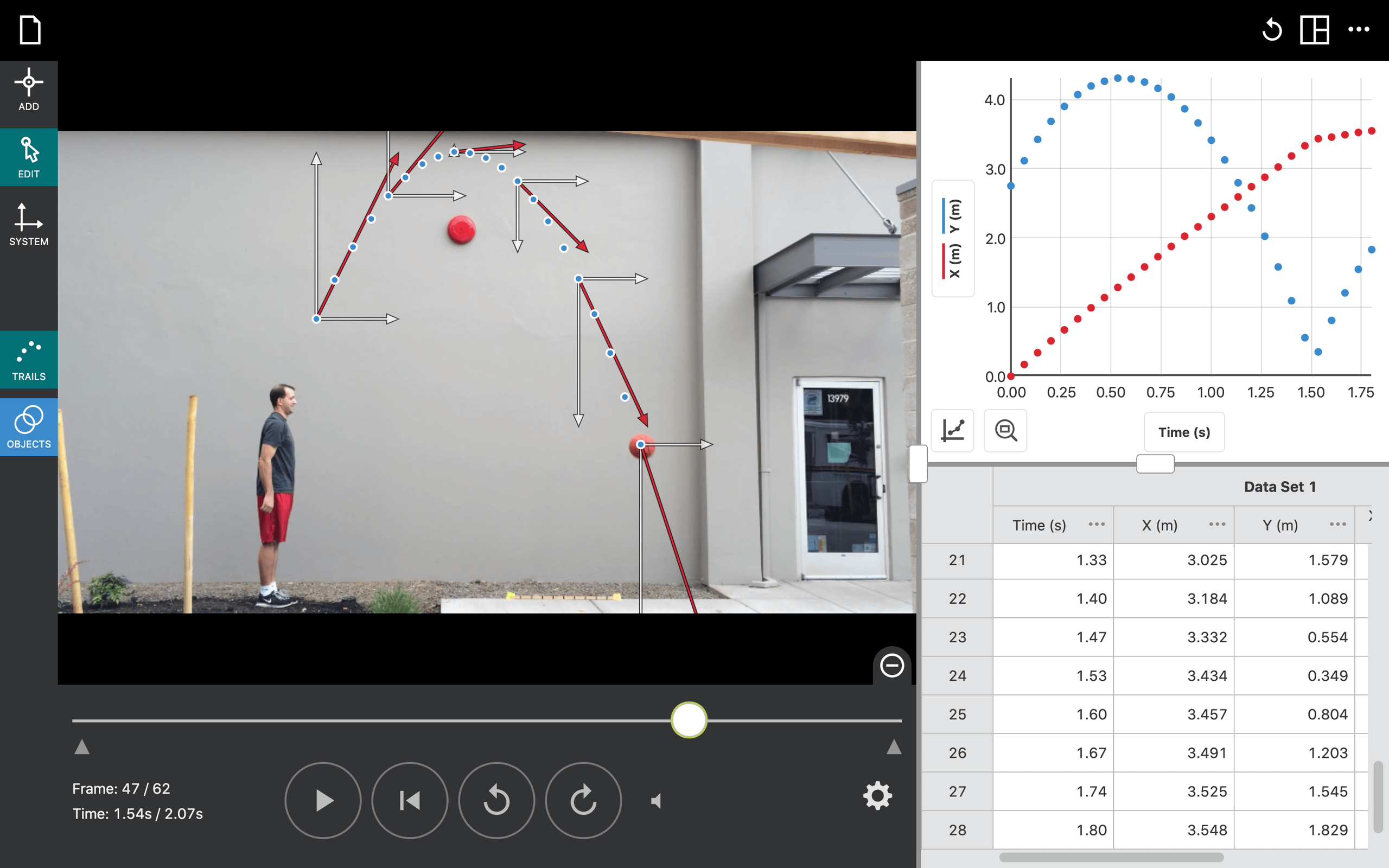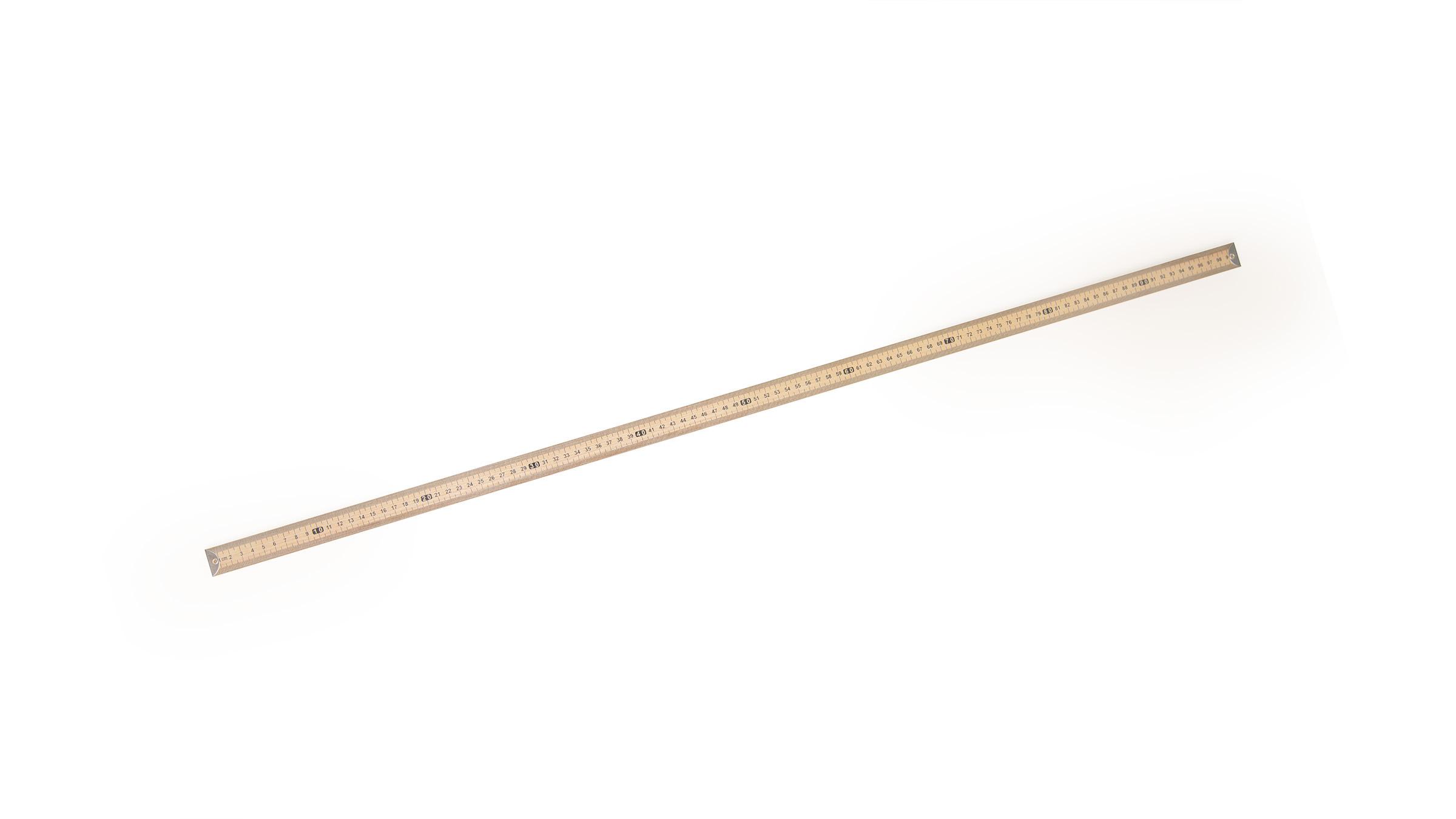Analysis of Jumping
Experiment #4 from Vernier Video Analysis: Conservation Laws and Forces
- Subject
- Physics
Introduction
Vertical jump tests are often used by physical trainers to assess leg strength. Simple alterations in the way a vertical jump is performed can alter the amount of force that is produced during the jump, affecting the results. A common testing technique is to have a subject perform a standing vertical jump. To limit interactions from the upper body, the subject may be asked to perform the vertical jump with the arms restricted. This restricted jump is also referred to as a squat jump. To do a restricted jump, the subject keeps their hands on their hips or waist when performing the vertical jump.
Force plates are often used to measure the peak force in these types of strength tests, but force plates can give counterintuitive results. For example, a large person can produce a good deal of force, but they may not be able to jump as high or accelerate as fast as a smaller person. Therefore, in some situations, peak acceleration may be a better measure of leg strength. If you know the peak acceleration, you can use the subject’s mass to calculate peak force without the need for a force plate.
The jumping motion can be divided into four distinct phases: the preparatory phase where the subject crouches in preparation for the jump, the push phase where the subject pushes off the ground, the rising phase where the subject’s feet have left the ground and the subject rises until they reach a maximum height, and the falling phase where the subject falls back to the ground. Using vertical motion data associated with the push and rising phases of a vertical jump, you can determine several factors commonly used to measure the leg strength of a test subject.
In this experiment, you will use Vernier Video Analysis app to examine the motion of a test subject performing two standing vertical jumps. The first jump will be a restrictive jump where the test subject holds their hands on their waist during the jump. The second jump will be a full vertical jump where the test subject’s arms and hands are free to move. Using the analysis features in the app, you will compare the vertical displacement, as well as the peak accelerations and peak forces generated during these two jumps from the provided video. As time permits (or as required by your instructor), you can complete one or more of the extensions or design your own investigation using videos of jumps that you record.
Objectives
- Use video analysis techniques to obtain position, velocity, and time data for a human subject jumping.
- Analyze the y position and y velocity vs. time graphs for the subject as they jump in two different ways.
- Calculate acceleration using a calculated column to find the maximum acceleration during each jump.
Sensors and Equipment
This experiment features the following sensors and equipment. Additional equipment may be required.
Ready to Experiment?
Ask an Expert
Get answers to your questions about how to teach this experiment with our support team.
- Call toll-free: 888-837-6437
- Chat with Us
- Email support@vernier.com
Purchase the Lab Book
This experiment is #4 of Vernier Video Analysis: Conservation Laws and Forces. The experiment in the book includes student instructions as well as instructor information for set up, helpful hints, and sample graphs and data.



